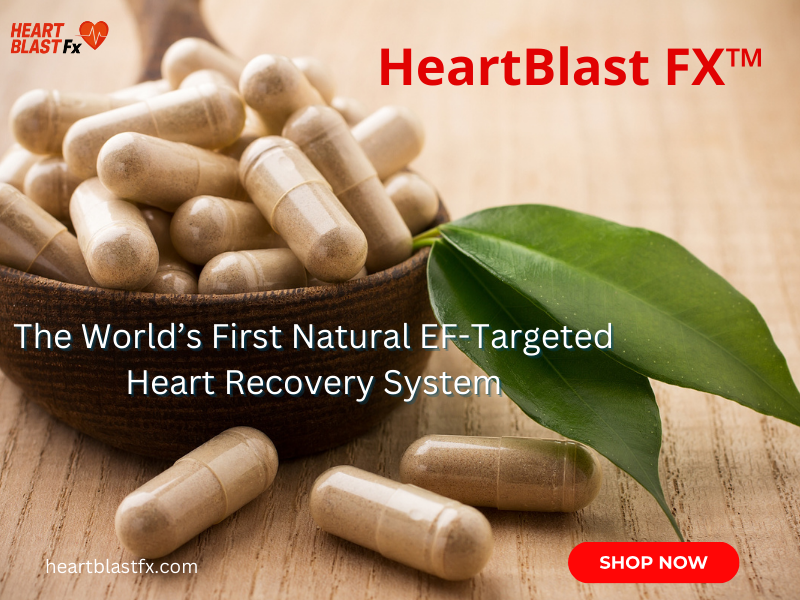
Personal care products might contain harmful chemicals
FREE Catholic Classes
McClatchy Newspapers (MCT) - Now we're really getting personal.
Highlights
McClatchy Newspapers (www.mctdirect.com)
12/9/2008 (1 decade ago)
Published in Health
We're focused on your private place _ the bathroom.
That's generally where you use all that soap, body wash, shampoo and lotion.
And deodorant, perfume, shaving cream, lip balm, lipstick, mascara, eye shadow, hair gel, mousse, hairspray, anti-aging serum ...
It all gets applied to your body, including all the chemicals within.
Diane MacEachern, author of "Big Green Purse," suggests a fun little exercise: Gather all those products in one place and take a count. You won't be alone if the number hits 12 or 15.
"People are amazed," she said. "Someone has convinced us we need to use all these products every day."
Eco-groups and environmental researchers have raised alarms about the cumulative health effects of many of the compounds found in personal-care products. While many industry experts say the products are safe, some scientists and others outside the industry disagree.
The health questions boil down to two. What happens to the body after the skin absorbs certain compounds day after day, year after year? What happens to the environment as chemicals from these products are washed down the drain?
Leslie Stullken of Fairway, Kan., had an "aha" moment about two years ago. As a food coach, she helps people prepare meals with local, seasonal and organic food.
She often tells them that "what you eat becomes a chemical message to your body." In other words, if it's not a nutrient, it might be a toxin.
"I realized, so what am I doing to my skin?" she said.
Stullken performed her own product count and quickly tallied a dozen items she uses every day. As her existing supplies were depleted, she began switching to products with natural ingredients. The Zum brand from Indigo Wild is among her favorites.
"I can pronounce the ingredients," Stullken said. "I feel safe and clean. And it's the sense that I don't have to worry about what's in this stuff."
For Laurie Hughes of Kansas City, Mo., a painful skin condition called "inverse psoriasis" prompted her to question the body products she used.
Hughes underwent a series of steroid treatments to control the psoriasis. Then she began researching manufacturers of natural products. She even attended National Psoriasis Foundation conferences.
Besides avoiding preservatives and other chemicals in personal care products, she has also cut back. Doing her makeup now means mascara and lipstick. That's all.
"I think it just looks fine, unless someone tells me different," Hughes said. "And the thing you find out after a while is how much better you feel overall."
In her book, published this year, MacEachern says women spend 85 cents of every dollar in the marketplace and are predisposed to protect the environment and health. That puts them in a strong position to force the greening of products, she argues. And in the personal-care category, they're the target audience.
"The way we spend our money is our first line of defense," she said. "American women have more economic clout than the GDP of China. It's huge."
Emily Main of National Geographic's Green Guide said many consumers aren't aware that the Food and Drug Administration doesn't review the safety of cosmetics and other skin and beauty products. And that many chemicals restricted or prohibited by the European Union aren't restricted in the United States.
A group called the Cosmetic Ingredient Review panel (www.cir-safety.org) evaluates safety, but critics point out that it's funded by the personal-care product industry.
Even so, Main said, consumers seem to be more concerned about broader health effects _ that leftover chemicals from soaps, cosmetics and other products are sullying the environment and threatening wildlife and the water supplies.
"I think that's where people really start to pay attention," she said.
So how to assess the risk to us and to the environment? The answer may depend on your outlook.
For instance, synthetic preservatives called parabens, widely used in cosmetics and other personal-care products, have shown up in breast cancer tumors. But parabens have been considered safe for years, and there had been no direct link made to breast cancer. Some consumers find assurance in that.
MacEachern prefers the "precautionary principle." It calls for action against health and environmental risks even if cause-and-effect hasn't been firmly established. And it demands that the industry bear the burden of proving its products safe.
"You don't wait till your child gets hit by a car to tell him to look both ways before crossing the street," MacEachern said.
If you're concerned, try taking these steps, compiled from recommendations by MacEachern, Main and Kim Erickson, author of "Drop-Dead Gorgeous."
As a start, assess the array of personal-care products you use. Are there items you can do without?
Eliminate one, or several, from your daily repertoire and see if you really miss any of them. Plenty of products you use probably have similar purposes.
"This is one place you can save a lot of money," MacEachern said.
Another method to reduce the volume of personal-care products: Regularly take a day off.
That means wash up and brush your teeth _ whatever you think the minimum is _ and don't slather anything else on your body that day. It could be once a month or once a week.
Watch for troubling ingredients
Check out the labels. There's some merit in choosing products with the shortest ingredient lists. The more complicated the formulation, the more likely it has lots of synthetic ingredients.
More to the point, there are key words to look for when trying to avoid potentially risky compounds, Main said. The Green Guide calls its list "The Dirty Dozen" (see below) and suggests taking the list with you to the store.
Also, be aware of meaningless terms. Marketing words on the label such as "natural," "botanical" and even "organic" might mean very little, because no government agency is monitoring their use.
If your favorite products contain ingredients you want to avoid, you're not stuck. Other companies are responding to demands like yours, with more and more items free of fragrances and parabens, for instance.
A few possibilities include Aubrey Organics, Burt's Bees, Ecco Bella, Jason, Honeybee Gardens, Miessence, Pangea Organics, Terressentials and Tom's of Maine, but there are many, many more.
THE DIRTY DOZEN
At least that's what the National Geographic Green Guide authors call the 12 chemical ingredients to avoid in cosmetics and other personal-care products.
_Antibacterials: Overuse might be contributing to increasingly resistant bacteria, and they contaminate the environment. Triclosan is the agent used in many soaps.
_Coal tar: Possible carcinogen in dandruff shampoos and anti-itch creams. Dyes with a coal tar base are used in toothpaste (FD&C Blue 1) and mouthwash (FD&C Green 3).
_DEA: Stands for diethanolamine and is used in shampoos to increase lather. Can affect hormones and cell functioning and development.
_1,4-Dioxane: May show up as a contaminant in personal care items, including shampoo and body wash; in products that contain sodium laureth sulfate; and ingredients expressed as "PEG," "-xynol," "ceteareth," and "oleth."
_Formaldehyde: Found in such products as baby bath soap, nail polish and hair dyes as a contaminant or break-down product of diazolidinyl urea, imidazolidinyl urea, bronopol and quaternium compounds. Formaldehyde is a probable human carcinogen and can have other toxic effects.
_Fragrance and phthalates: The term "fragrance" can be hiding suspect substances called phthalates, which may affect hormones and cause reproductive and developmental harm.
_Lead and mercury: Lead can show up in products that have hydrated silica, such as in toothpaste. Mercury, found in the preservative thimerosal, is in some mascaras.
_Nanoparticles: Tiny particles of such things as zinc oxide and titanium oxide in cosmetics and sunscreens could cause cell damage, but they're tough to track. Some manufacturers now advertise products that are free of nanoparticle-size ingredients.
_Parabens: Common preservatives in toiletries, parabens grew controversial due to their weak estrogenic effects in some animals studies. Check for methyl-, ethyl-, propyl-, butyl- and isobutylparaben.
_Petroleum distillates: Check for the terms "petroleum" and "liquid paraffin" in such products as mascara and foot-odor powder. The European Union restricts or prohibits petroleum distillates as possible human carcinogens.
_PPD: P-Phenylenediamine can be found in hair dyes and may cause irritation and damage to the nervous system and lungs.
_Hydroquinone: Can be found in skin creams and under-eye treatments. Limited evidence links it to cancer in laboratory animals.
GIVE IT A TRY
1. Take stock of your assortment of personal-care products and find two you can do without. In the future, that's two fewer items to purchase.
2. Give your body a breather one day a week from all products except the very basic, such as soap and toothpaste. OK, and a dab of deodorant.
3. Do some label reading and a bit of shopping to replace two items of questionable chemical formulation with two that are free of such things as phthalates and parabens. Can you do it without spending more money?
LOOK IT UP
_At www.cosmeticsdatabase.com, the Environmental Working Group has a searchable database it calls "Skin Deep." Type in the name of a product to find the ingredients on that product's label plus an assessment of the health risks of those ingredients.
_Worried about baby? The Environmental Working Group site also offers baby product suggestions, including shampoo, soap, wipes and diaper cream, that avoid troubling chemicals (California Baby, Burt's Bees and Aveeno, to name a few). Go to www.cosmeticsdatabase.com/ special/parentsguide.
_The Natural Products Association this year established a certification program that defines "natural" and uses a seal to designate skin and hair products that meet the standards. Certified products must be made from at least 95 percent nonsynthetic ingredients. For more information, go to www.naturalproducts assoc.org.
_The Campaign for Safe Cosmetics, a coalition of health, environmental and consumer-rights groups, offers a "compact for safe cosmetics." Companies that sign the agreement pledge not to use chemicals that are known or are strongly suspected of causing cancer. They pledge to replace chemicals with safer alternatives. For a list, go to www.safecosmetics.org .
___
© 2008, The Kansas City Star.
Join the Movement
When you sign up below, you don't just join an email list - you're joining an entire movement for Free world class Catholic education.
- Easter / Lent
- Ascension Day
- 7 Morning Prayers
- Mysteries of the Rosary
- Litany of the Bl. Virgin Mary
- Popular Saints
- Popular Prayers
- Female Saints
- Saint Feast Days by Month
- Stations of the Cross
- St. Francis of Assisi
- St. Michael the Archangel
- The Apostles' Creed
- Unfailing Prayer to St. Anthony
- Pray the Rosary
![]()
Copyright 2025 Catholic Online. All materials contained on this site, whether written, audible or visual are the exclusive property of Catholic Online and are protected under U.S. and International copyright laws, © Copyright 2025 Catholic Online. Any unauthorized use, without prior written consent of Catholic Online is strictly forbidden and prohibited.
Catholic Online is a Project of Your Catholic Voice Foundation, a Not-for-Profit Corporation. Your Catholic Voice Foundation has been granted a recognition of tax exemption under Section 501(c)(3) of the Internal Revenue Code. Federal Tax Identification Number: 81-0596847. Your gift is tax-deductible as allowed by law.










